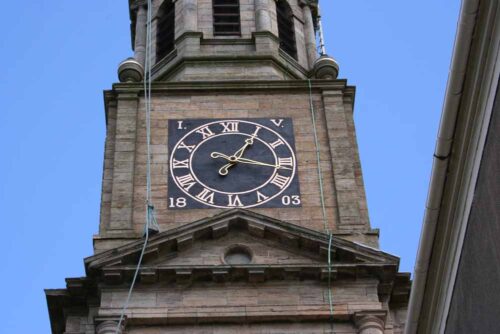The top of this spire was taken down and rebuilt to stabilise it. The stabilisation method that had been used at the top was terrible, so we removed it and replaced it with the correct arrangement, which involves a stainless steel centre rod and a stainless steel cross-tree.
Click on images to view full size. Click a second time to close.
This picture was taken near the beginning of the scaffold (during the scaffolding phase).
The old finial and cockerel can be seen here.
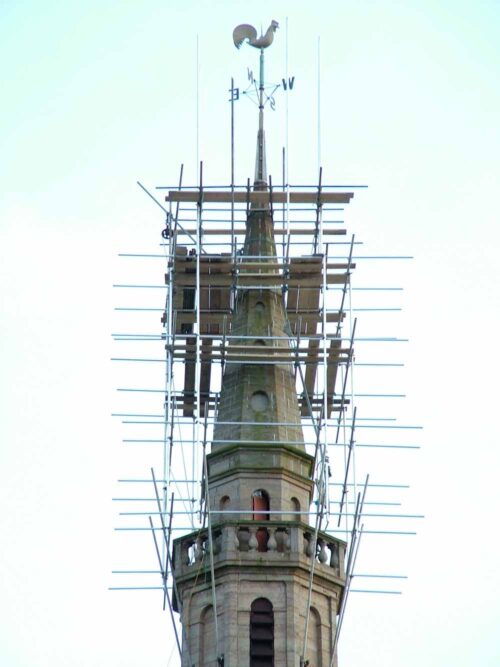
The spire dismantled almost right down to cross-tree level. That ironwork was all removed, as it rusts inside the stone, expands, and cracks the stonework.
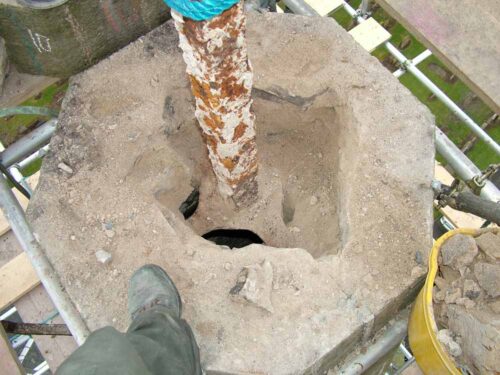
Part way through the rebuilding phase.
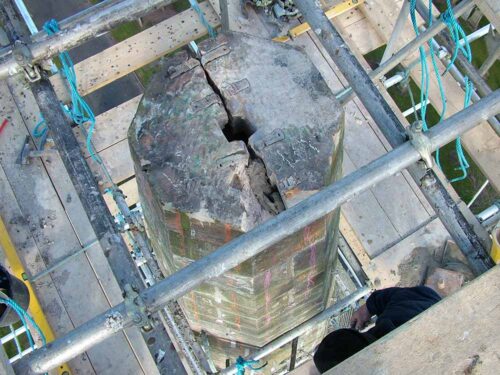
The spire is now fully rebuilt.
This picture shows the compression plate / centre rod assembly almost completely inserted.
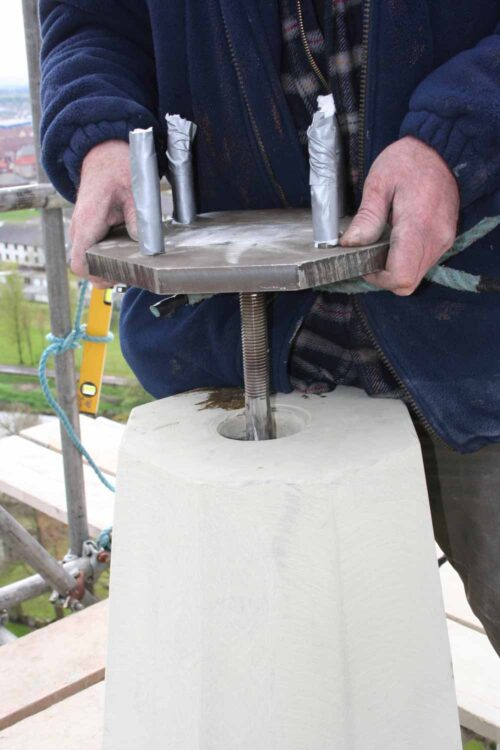
The stainless steel “compression plate” is now fully seated, the centre rod beneath is tensioned down onto the cross tree, and the finial can now be installed.
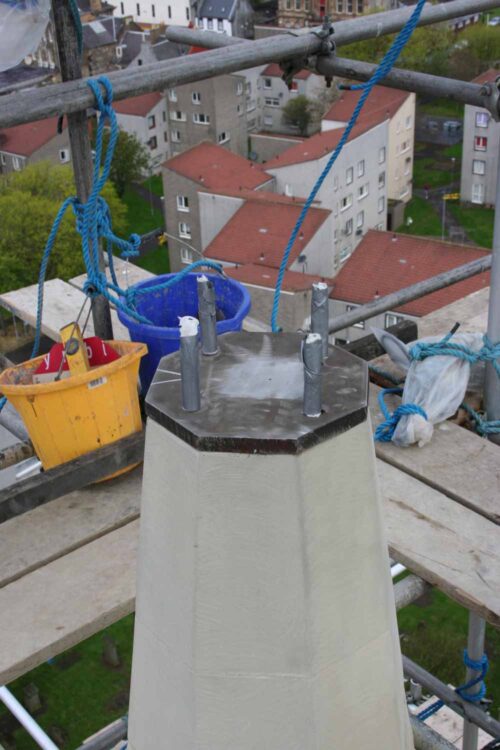
The stainless steel finial mounted and the lightning conductor bonded. There is a 2nd lightning conductor tape on the opposite side.
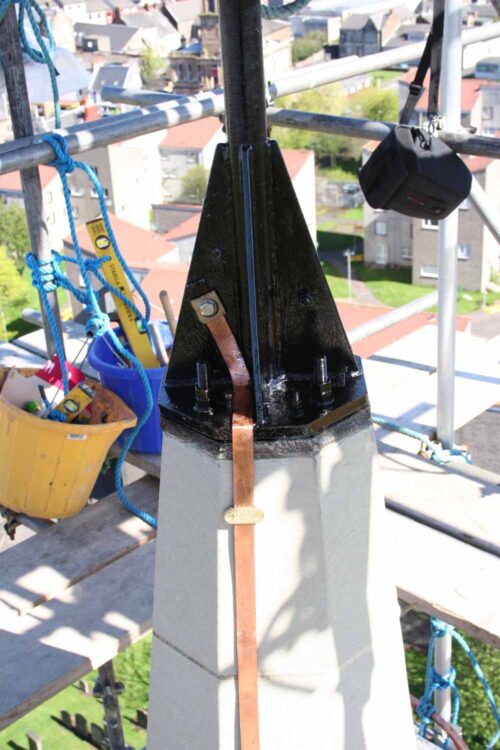
The cockerel and the decorative copper spheres before they were erected. The polished copper of the cockerel has a beautiful shine but unfortunately this would have been lost as oxidation occurred, so the church opted to have them painted.
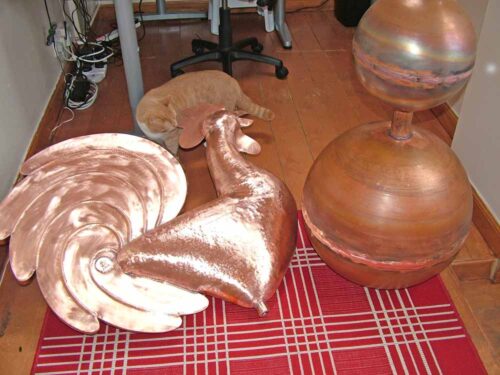
Finial complete.
The copper balls and the cockerel are brand new, as is the stainless steel finial rod to which they are attached, and the cardinal points were refurbished.
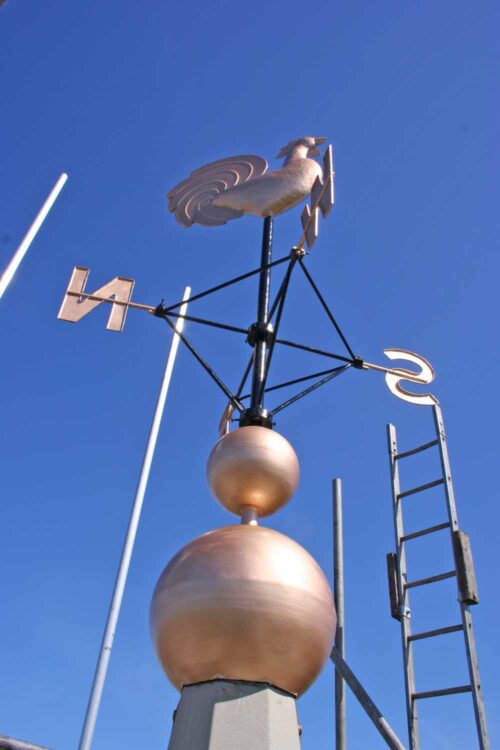
Looking up at the finial and the newly built top section of the spire after the ladders had been removed.
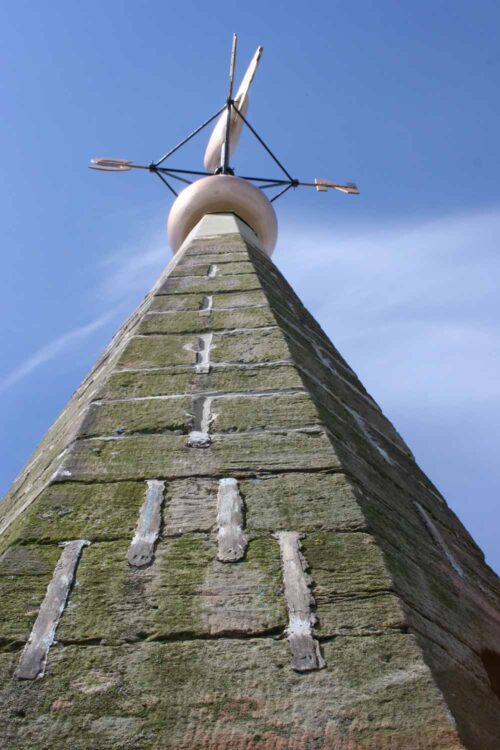
Main contract complete.
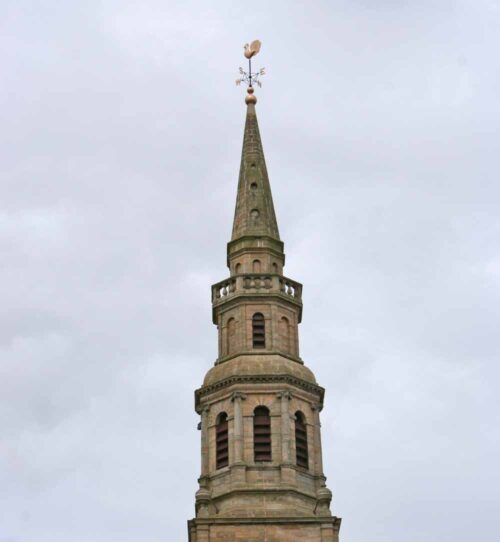
The picture below shows the clock face on the west side of the church before work started.
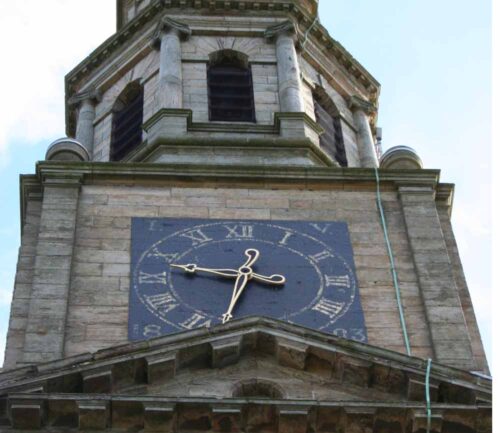
After the work was done.
